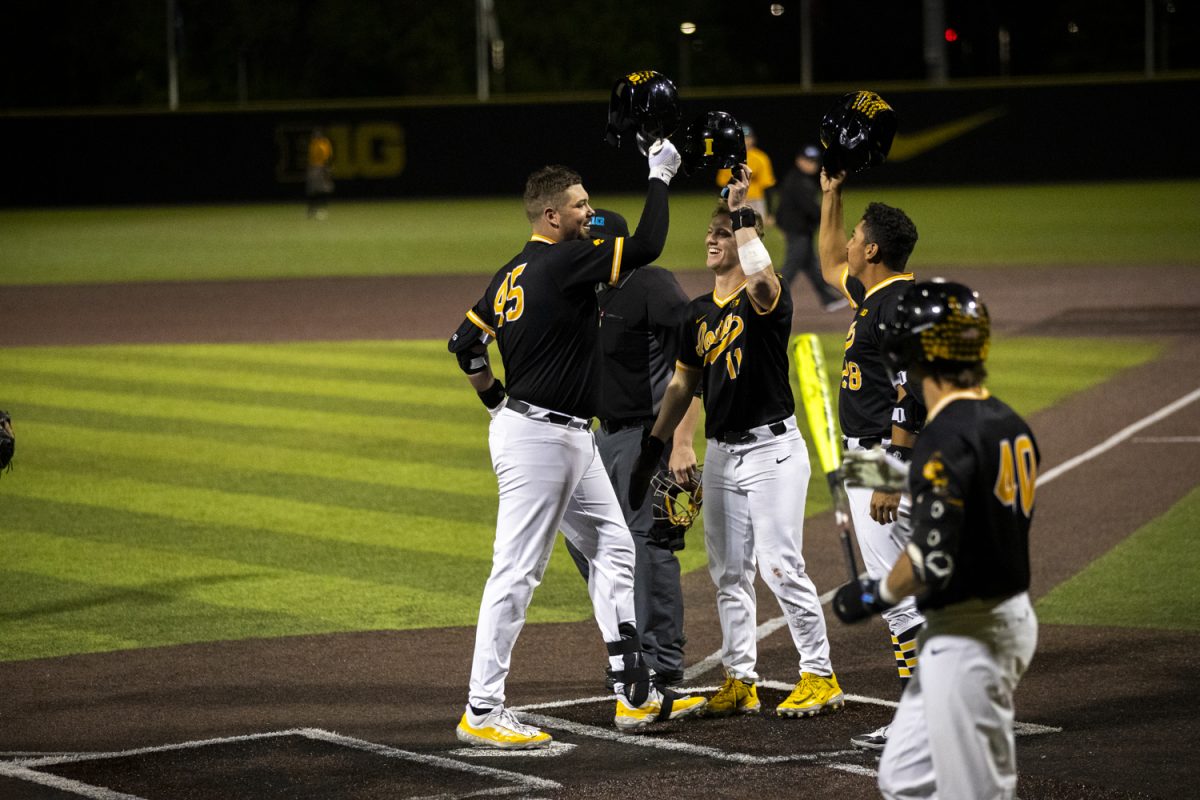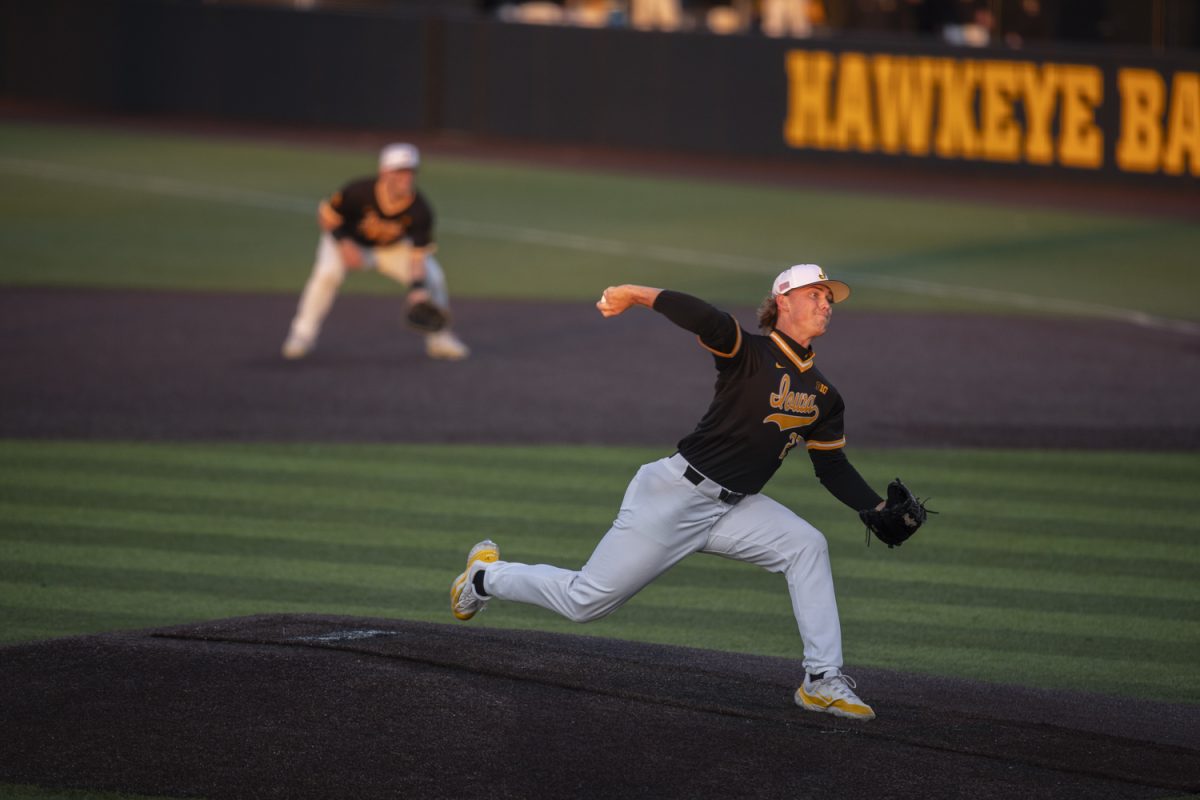Whether it’s LeBron James hitting full court shots, Andy Roddick exploding a tennis ball, or a daredevil surfing 50-foot swells during a tsunami, Powerade is synonymous with powerful athletes.
The UI, along with several universities around the country, is on board with Powerade as its intramural sponsor. The company has sponsored UI intramurals for the last three years.
To accomplish such a large-scale campaign, Powerade has installed campus representatives to help promote its products at hundreds of universities, including Iowa, although, this is only the second year the representatives have been in action.
Catherine Smale, a UI senior and representative of Powerade, said the company has been happy with how things have gone the last two years at Iowa. Not only is Powerade marketing its products to thousands of students at the university, it gives those students a different type of social networking venue — along with the free drinks.
“My job is keeping a website that showcases the teams,” Smale said. “It provides students with a site where they can go on and look at themselves and other teams from all around the country. I think it creates a sense of community.”
Once a week, Powerade supplies the UI intramural flag-football program with free drinks, headbands, towels, banners, flags, T-shirts, and more. Campus representatives also conduct sampling of some of Powerade’s newest flavors.
“We’ve been very happy with the situation,” said Mike Widen, an associate director of Recreational Services. “[Powerade officials] can get their product name out to a large number of college students.”
A UI assistant professor of marketing said there’s no surprise in Powerade’s focus on college students.
“I expect that the core users, mainly athletes, have been exhausted,” said Lopo Rego from the UI College of Business. “So companies, such as Powerade, start to think, ‘Where else can we still sell these brands?’ This is why you see an explosion of new flavors that try to appeal to everyone’s tastes. Now, you see these companies coming up with light drinks which are basically flavored water. G2 from Gatorade is a good example.”
In 2007, the Coca-Cola-owned Powerade made more than $250 million in sales, second only to Gatorade in the sports-drink category, and the consumption of the multicolored hydrator continues to grow.
Sales in this area have increased dramatically from 10 years ago — from $2.2 billion to $7.5 billion, according to a 2007 study in Beverage Digest.
With such a competitive and growing product, the business has become cutthroat. Gatorade even brought a lawsuit against Powerade in April, claiming Powerade made false claims about its newest product, ION4. This type of tug-of-war in the industry may be what has caused companies like Powerade to search out a broader consumer base to remain competitive.
The new target audience can be found almost anywhere in the country, including Florida, where Gatorade was invented.
Gary Cahen, assistant director of intramural sports at the University of Central Florida, said there hasn’t been much backlash from Powerade invading Gatorade country.
“The university has an exclusive sponsorship with Coca-Cola. All you see is Coke machines, Powerade machines, or Dasani water,” he said. “Both the students and our university are happy with Powerade. I couldn’t say anything bad about them.”
But Cahen also acknowledged that the state of Florida has been hit pretty hard during the economic recession. He said any help is good, even though the stipends from Powerade are fairly nominal — Central Florida receives roughly the same amount of money and product sampling as the UI and the other institutions associated with Powerade.
Those numbers are hard to come by: UI officials said they are bound by contract not to discuss the actual figures.
These samplings could be ways for Powerade to expand its business in a college atmosphere — especially because Powerade now has a much broader line of products.
Rego said when companies such as Powerade started, they had limited products available. The products were never refrigerated and only came in select sizes.
Powerade itself started in 1990, and it was only available at soda fountains, but it launched nationally in the United States in 1992 because of demand. As the company expanded, so did its product line, which included powders people could mix at home.
The company is now at the point at which it sells everything from herbal teas to its own water brand.
“Now, it tries to broaden its customer base by using things such as vending machines, refrigerated cases in grocery stores, gas stations,” Rego said. “The stuff is just everywhere.”
Coke and Powerade machines litter the UI campus. Students can down a glass of Powerade’s Mountain Blast in the dining halls if they so choose.
Rego said he also believes another avenue of change will include new products and marketing campaigns, two aspects that play a huge role in how well or how poorly a company such as Powerade fares.
For example, Powerade was a sponsor at the Beijing Olympics, and the company has been able to control more than 33 percent of the market share, with much of the growth occurring in the last three years.
While many students enjoy getting a free bottle or T-shirt, that doesn’t mean everyone is completely sold on Powerade’s presence.
“It’s fine so long as it’s not overdone,” UI senior Jonathan Hull said. “But it is at Iowa football games. We already see enough with the Panchero’s burrito lift, Delta Dental smile cam, Pizza Hut replay. I could go on and on.”
According to Beverage Digest, the average consumer drinks 4.5 gallons of sports drinks annually.
For the UI and its students, it looks like it will be 4.5 gallons of Powerade.






